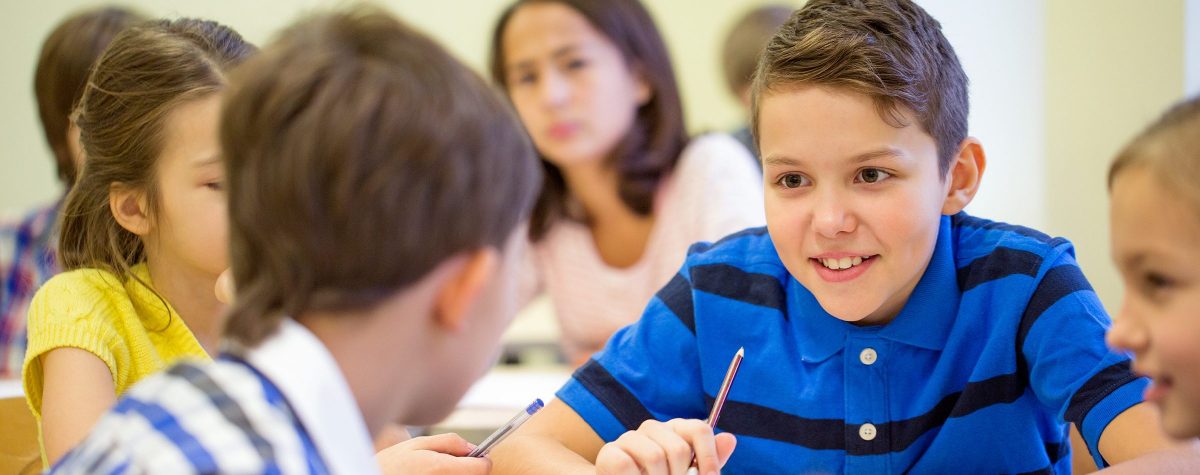As teachers, we’ve all encountered discipline issues in the classroom–it comes with the territory! Strong classroom management skills are one of the most important factors in becoming an effective teacher. Picture this: you’re teaching a lesson. Most of your students are on task, steadfastly writing their narrative essays, taking notes, or working on their math problems. You hear a whisper from the back of the room and see two heads bent together in private conversation.
What to do next? Incorporate these next six tips into your classroom management routines to prevent these kinds of distractions.
1. Avoid calling attention to the disruption.
What’s important in classroom management is to quickly redirect the students who are misbehaving while avoiding distracting the students who are on task. Calling students’ names in the middle of a lesson causes the entire class to pay attention to the few who are not on task. Instead, use a phrase to address the entire class, such as “Let’s stay focused” or “Eyes on your own papers.” “I need everyone to have their eyes on me” is another good phrase to use to signal to the distracted student that you are paying attention to their behavior.
2. Address off-task students privately.
The key to effective teaching is to maintain respect between teachers and students. Embarrassing a student in front of the class might stop the behavior immediately but does very little to ensure that the behavior won’t occur again in the future. If the behavior doesn’t stop after your redirection phrase to the class, create a quick break in the lesson (perhaps while students are working independently) to quietly address the student personally with one of the redirection phrases.
3. Prompt the student to self-correct their behavior.
Instead of issuing a command to an off-task student, turn your verbal redirection into a chance for the student to correct their behavior. For a student who is fiddling with their pencil, you might ask, “How should we be holding our pencil?” instead of “Stop that!” Phrasing redirections into a question prompts the student to think about their current action and how they can fix it.
4. Keep your eyes focused on the rest of the class.
Notice a pattern? Effective classroom management means avoiding stopping your lesson at all costs while quietly addressing the distractive behavior. Use proximity to your advantage. During independent work, make your way over to the off-task students but keep your eyes forward on the class. The off-task students will look where you look and consequently get back on track.
5. Use nonverbal cues.
Sometimes, nonverbal cues are best to avoid disrupting an entire class when only a few aren’t paying attention. A special clapping sequence that students are expected to repeat back is great for commencing a lesson for younger, elementary-aged students. For older students, having a “secret” hand sign between you and the individual student can work wonders. A student can then signal that they need a brain or bathroom break and eliminate negative behavior that can follow.
6. Provide consistent encouragement.
Always end a student interaction on a positive note. After the student corrects their behavior, don’t forget to thank the student for getting back on task. A little encouragement goes a long way, and you’ll be sure to maintain positive relationships with all of your students.
You’re a teacher for a reason, and although discipline issues are common in the classroom, they don’t decrease your love of your profession. With these six tips, you can decrease common disruptive behaviors and spend more time on what you love: teaching!




Comments for Six Ways to Deal with Classroom Disruptions
Add A Comment
Your email address will not be published. Required fields are marked *